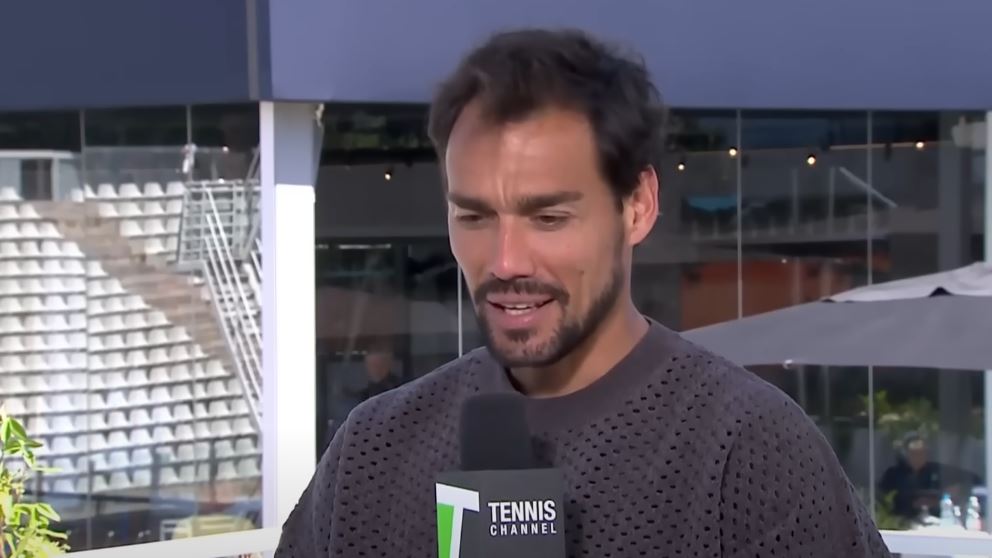
Like his playing style, Fabio Fognini’s financial journey has been filled with unexpected turns and thrilling highs. The Italian superstar, whose estimated net worth ranges from $7 million to $10 million, leaves behind a portfolio based on strategic moves and cultural significance in addition to a record of athletic accomplishment. Although his career prize money alone—a startlingly impressive $18,996,017—makes up the majority of his wealth, his off-court presence has kept him financially stable over years of erratic play.
The 2019 Monte-Carlo Masters victory was especially helpful to his market value. He defeated Rafael Nadal on clay, a rare accomplishment that immediately cemented his reputation among top players, and it wasn’t just a trophy; it was a signature career statement. Profitable endorsements are frequently the result of victories of that size, and Fognini’s case was no different. Soon after, Armani made him the star of advertisements that combined high fashion with sports, a combination that was particularly popular in Italy’s image-driven sports culture.
Fabio Fognini Bio & Career Overview
| Category | Details |
|---|---|
| Full Name | Fabio Fognini |
| Date of Birth | May 24, 1987 |
| Birthplace | Sanremo, Italy |
| Residence | Arma di Taggia, Italy |
| Height | 1.78 m (5 ft 10 in) |
| Playing Style | Right-handed, two-handed backhand |
| Turned Pro | 2004 |
| Retired | July 9, 2025 |
| Career Prize Money | $18,996,017 |
| Career Titles | 9 Singles, 8 Doubles |
| Highest Singles Ranking | No. 9 (July 15, 2019) |
| Highest Doubles Ranking | No. 7 (July 20, 2015) |
| Signature Wins | 2019 Monte-Carlo Masters, 2015 Australian Open Doubles |
| Endorsements | Emporio Armani, Asics, Babolat |
| Estimated Net Worth (2025) | $7 million – $10 million |
| Spouse | Flavia Pennetta |
| Children | Three |
This brand power was enhanced by his collaboration with Grand Slam champion Flavia Pennetta. They essentially became Italy’s tennis power couple, a duo that proved to be very adaptable for advertising campaigns. The couple’s marketability went beyond tennis into the lifestyle and luxury sectors, as evidenced by their catwalk-worthy Armani photos and Asics performance endorsements.
Fognini leaned into his maverick image and was remarkably successful as a marketer of his own persona. Even though his erratic on-court demeanor occasionally resulted in expensive fines, it helped him maintain media attention, which many athletes lose when they fall out of the top rankings. This readiness to accept flaws rather than cover them up helped create an authenticity that appealed to sponsors and fans alike.
Over the years, his earnings have shown the rhythm of a career that has been both blessed and burdened by streakiness. His financial peaks occurred during the 2018 and 2019 seasons, when his yearly prize money surpassed $2 million. Surgery, injuries, and slumps in performance would ensue, but support from devoted partners like Babolat and Armani made sure that his revenue stream was not severely cut off during off-peak years.
Fognini exemplifies a type of athlete who thrives on more than just rankings in the context of contemporary tennis economics. While Rafael Nadal and Novak Djokovic have accumulated fortunes in the hundreds of millions, Fognini has created a very successful middle-tier career model by combining investment foresight, stable endorsements, and sports earnings. For instance, Liguria’s real estate purchases indicate a very resilient strategy for preserving wealth that will benefit him greatly in retirement.
Comparing him to his fellow citizens reveals a fascinating tale. Italy’s next generation is being led on tour by Matteo Berrettini and Jannik Sinner, but neither has had the same combination of longevity and universal appeal as Fognini. His nearly two decades of commercial relevance is a testament to both shot-making and brand management.
Some of the controversies that once overshadowed his accomplishments have subsided in recent years due to a notable improvement in public perception. After a five-set Wimbledon match against Carlos Alcaraz in 2025, he announced his retirement, redefining his legacy as a warrior who was prepared to take on the sport’s next great champion before retiring. Such exit narratives are commercially significant; it would seem inevitable that there would be exhibitions centered around nostalgia, ambassadorial positions, and commentary.
Fognini’s career path and net worth show that financial success is possible for Italian tennis without constant dominance. He demonstrated to younger players that influence and wealth can be developed far outside of the tennis court by carefully coordinating his image with fashion, lifestyle, and cultural cachet. Perhaps more than the awards, this lesson best captures his lasting influence.
